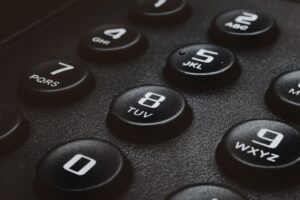
There are a few different phone numbers you can call in Minnesota if you want to report a crime or suspicious behavior, and police oftentimes use this information to help keep local communities safe. However, this system can also be abused, as an ex-lover or a road raging motorist could lie about what took place as a form of revenge against another party. This begs the question, “How far are police allowed to go when acting on a tip?” We answer that question and explain if police can actually pull you over based on a tip they received from a person or an anonymous caller.
Pulled Over On An Anonymous Tip
Law enforcement receive hundreds of tips a day over the phone, and it’s their job to determine which of these tips are credible and warrant additional investigation. But does a tip in and of itself give police enough probable cause to pull a driver over without witnessing any other driving infraction?
In the eyes of the law, a phoned in tip can be enough evidence for police to conduct a traffic stop without having witnessed the issue for themselves. These tips are considered a form of reliable hearsay. Police do not need to witness another infraction in order to pull you over, but the vast majority of the time, they will try to observe another driving offense before they engage in a traffic stop.
If they witness an infraction and it allows them to conduct their own investigation, then they only have to rely on their version of events. If they act solely on the tip, that tipster will likely need to testify in order to earn a conviction, and that can open up a can of worms for the prosecution. If the witness refuses to testify, changes their story or is shown to be unreliable, it can render the traffic stop and anything that happened from that point on inadmissible in court, resulting in the charges being dropped. Police can act solely on this tip, but they know it’s much easier on their end if they can witness a driver violating the law before engaging.
Police also need to vet the credibility of the tip before jumping to conclusions and pulling over a driver. For example, let’s explore the credibility of these two examples:
1. A bartender who identifies herself calls police to report that a patron named Brad Jones just drove off after she informed Brad that she would not serve him because he appeared intoxicated. She reported the make, color, model and license plate of Brad’s vehicle, including the direction in which he left.
2. An officer receives an anonymous tip from a person saying that they just saw Brad Jones leaving a bar in a red vehicle, and he appeared unsteady on his feet when seen walking to his car.
Now, both of these tips could end up being credible, but the first scenario is much more credible. The bartender is willing to identify herself, she is in a position to be aware Brad’s state of intoxication, and she provided a lot of information that could allow police to catch up to Brad. The second tip could be credible, but perhaps a witness just observed Brad tripping over a curb as he returned to his vehicle after he came back to the bar the following day because he left his credit card at the bar and had to pick up his vehicle after he got a ride home from a friend the previous night. Police can’t call an anonymous caller to testify, and the rest of the report is rather weak, so they would want to observe Brad’s driving behavior before conducting a traffic stop.
As defense attorneys, we love when a case hangs on something as a circumstantial as a phoned in tip. The ends can’t justify the means, and if there’s even a slight issue with the tip or the eventual traffic stop, we may be able to get the whole case thrown out.
Consider one last example. Brad and Jenny recently broke up, and Jenny decides to take revenge on Brad. She knows he goes to a bar to watch the Vikings on most weekends. She calls police after the game to report that she just saw Brad leaving the bar and he appeared intoxicated. Police pull Brad over without witnessing any other traffic infractions, and during the traffic stop they determine he is under the influence. Brad is arrested and charged with DWI. Eventually, Brad’s lawyer discovers that Jenny made the call from her house, and there is no way she would have observed Brad leaving the bar when she said he did. Even though Brad was driving drunk, police were acting solely on information that turned out to be false, which means the traffic stop was unjust and any evidence collected after that point is inadmissible.
At the end of the day, police can pull over a driver based on a tip or an anonymous phone call, but far more often than not they will try to observe an infraction and ensure the creation of probable cause on their own so that their case is less reliant on the tip.
If a tip led to your arrest or you simply want assistance fighting the criminal charges against you, reach out to Avery and the team at Appelman Law Firm today at (952) 224-2277.





